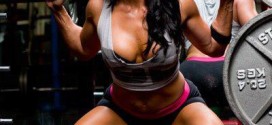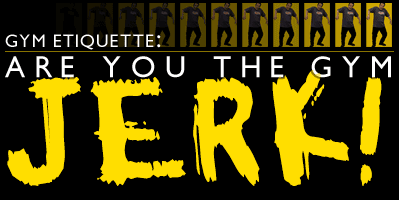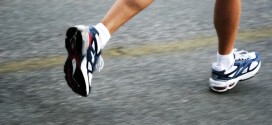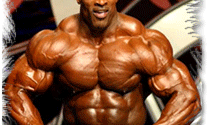I was speaking to one of my good friends, he plays basketball for his college, and in the conversation a question popped up ‘How to jump higher?’ I told him that jumping requires explosive movement and this like most strength related activities can be increased, with the correct training. A vertical jump is total reach during the peak of the jump minus the standing reach. A true vertical jump is a jump without taking a step and touching the highest point achievable. Since the vertical jump is an explosive movement, both strength and power need to be developed in order to increase it.
Strength exercises are slow controlled actions. There are certain strength exercises that will benefit the vertical jump, we use our legs to jump thus obviously strength development of the muscles in the legs such as the Gastrocnemius, Gluteus maximus, Quadriceps and the Hamstrings is key. The best exercises are squats, lunges and step ups. The reason these are the best is because they are compound movements which encourage development of more then one muscle such as squats workout the Gluteus maximus, Gastrocnemius, knee joint and hip joint all simultaneously. Rule of thumb which is important during any exercise is that form is key to an effective workout.
Squats are one of the elite exercises an athlete can use to achieve strength gains when performed correctly. If poor form is used then it can lead to serious injuries involving the lower back which can be very painful and hampering. These days I workout at a local gym nearest to my house which a lot of young athletes from the nearby college use, it’s painful just watching the guys squat. The majority of the squats are incorrectly performed, over the time I’ve analysed the two main areas of concern in form: extreme forward lean of the upper body, which can cause lower back injuries and excessive forward
movement of the knees.
The key points of a good squat are:
- Athletic stance.
- The bar across the upper back (on traps and shoulders).
- The chest out and the back tight with a slight forward lean.
- The knees stay directly above the feet at all times.
- Sit back deep to parallel, keeping weight on the heels.
Before attempting squats, have a trained professional or someone who knows what they are talking about scrutinize your technique to make sure it is fundamentally sound. Concentrate on technique and achieving perfect form and then later work on ramping up the weight, for now stick to a few extra repetitions with ideal technique.
Step ups are performed with dumbbells and a step-up box or bench. Standing in an upright position holding the dumbbells in each hand, you step up on to the box or bench at the height that would put your knee at a 90-degree angle. Do 10 repetitions with one leg and repeat with the other, alternating which leg you use every set.
Lunges can be done holding dumbbells or with the bar across your upper back similar to the position the bar is placed during a squat. Stand up in an vertical position, step as far forward as possible with no forward lean of the upper body until your front knee is at a 90 degree angle. Then step back to the original position in one step. Steps and lunges complement squats because they work each leg independently while on the other hand the squat being a compound exercise works both legs at the same time. All three of these exercises not only promote the growth and increase in strength of the large muscle in your legs but also enhance your balance by working the synergists= muscles in the legs, these are the normally smaller muscles which advocate properties such as balance during an exercise.
Power exercises involve explosive quick movements. They include power cleans, plyometrics and weight box jumps. These are the types of exercise that use explosive movements to develop muscular power, the ability to generate a large amount of force in a short period of time. It may be used, for example, to improve the effectiveness of a boxer’s punch, or to quicken the throwing ability of a baseball pitcher. Plyometric training acts on both the musculotendinous and neurological levels to increase an athlete’s power output without necessarily increasing their maximum strength output.
Power Cleans
Power cleans are a very advanced technical exercise that develop core muscle strength and explosive hips. Normally associated with power lifting as it is one portion of the Olympic lift, the clean and jerk. They involve the use of many joints and muscle groups in a coordinated movement
Plyometrics
Plyometrics are explosive, hopping and jumping callisthenics. Jumping in this manor brings together the strength and speed components to lead to an increase in power. Plyometrics have one key feature, which resembles a lot of workouts such as HIT (High Intensity Training) they require maximum effort for greatest results. Practicing maximum effort jumps will increase your vertical jump – ‘Practice makes perfect.’
Weighted Box Jumps
The most obvious form of exercise to perform would be jumping with a greater resistance this is where weighted box jumps come in to the equation; they are a form of plyometrics. You hold light dumbbells in each of your hands (start with a light weight) with your arms straight right the way through the exercise. Stand in front of the box and jump as high as feasible and then landing softly as possible. Step down and repeat for 3 sets of 10 jumps, this high rep range is adapted because your legs are used to being used a lot; we use our legs a lot day to day, thus they can endure a greater force against a resistance. This should be done twice a week with the rest of your leg workout. Never land with your hips lower than your knees and concentrate on each jump and maximise effort for every jump to achieve the best results.
Conclusion
There are a few key rules that should be implemented with any workout to achieve results, such as using the correct form and putting maximal effort into each and every rep while focusing on the task at hand. With consistent, proper training, I have seen young athletes increase their vertical jump by 6 inches over a few months of dedicated training. This article covers all bases of improving your jump, this training is key if you want to excel in sports such as basketball.
By Jalal Arshad
 Supplement Judge Unbiased Supplement Reviews – Do they really work??
Supplement Judge Unbiased Supplement Reviews – Do they really work??





Great post here. I see so many people squat with bad form. I would argue that squatting is not an “elite” exercise though. It is a fundamental movement which; when refined, can turn into an elite movement with added weights, boxes, jumps, etc.. Not enough people know how to squat effectively…..Thanks for sharing!